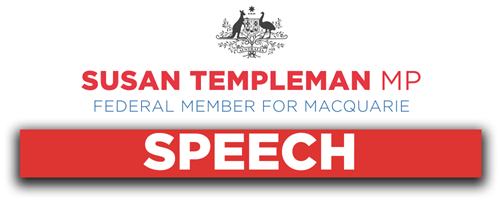
I get that people love a simple solution. Liberal politicians especially seem to love a quick fix, even if the science doesn't add up. When it comes to the flooding in the Nepean-Hawkesbury Valley, the New South Wales minister for Western Sydney, Stuart Ayres, especially loves to use fear to compel others to support his Warragamba wall-raising proposal. 'It's raining,' he says, 'a lot,' he, says. 'It might flood,' he says, 'so we need to raise the wall by 17 metres.'
Let's get a few things clear. Mr Ayres, on the nightly news, is not the person to listen to if you are worried about flood warnings. A federal government agency, the Bureau of Meteorology, is the body that issues not just the official flood warnings but also the official flood alerts. If you go to the BOM site, find the water information and then flick to the national flood forecasting and warning service, you can read about the process and see any current warnings. There are none for the Hawkesbury or the Nepean right now. There's not even an alert. It's probably time that Mr Ayres dispensed with the fear campaign and focused on the facts—all the facts, not just the ones that suit his purpose.
There are a set of reasons why raising the wall is a flawed proposal above the dam, and there are another set of reasons why it's a flawed proposal below the dam. IAG, the country's largest insurer, have made a decision that they no longer support the proposal, and they cited the impact on the probable loss of significant Aboriginal cultural heritage sites and important natural habitats. I'm going to focus, though, on the downstream reasons.
The fact is that the New South Wales Liberal government wants to increase the number of people who settle in the Hawkesbury-Nepean Valley by 134,000 over the next 27 years. That is from Infrastructure New South Wales's own 2017 report. That's a doubling of the population and a lot of extra people to move quickly in a major flood, especially given there's been so little investment in evacuation routes. That target ignores the lessons people thought had been learnt by the horrific 2011 Brisbane floods, where previous state and local government decisions allowed housing developments on high-risk areas of the Brisbane River flood plain, falsely believing the Wivenhoe Dam had flood proofed the valley.
Of course, we face what's called the 'bathtub effect'. Sackville Gorge acts like a plughole and banks up the water. But it isn't just water from Warragamba that's coming in. It could be the Grose River, Colo River, South Creek—in fact there are a number of sources of water. Our reality is, as former head of the SES Chas Keys says:
We need to recognise the fundamental reality that floods cannot be eliminated and that the community must not be misled into thinking that mitigation will completely solve the problems that floods pose.
But there are things that governments should be doing. Labor did it when it was in office. It acted on the engineering and the science advice that it received, not to assist developers but to save lives. We built the Jim Anderson bridge to facilitate evacuation. We also made the dam wall safer and put in auxiliary spillways. These were sensible things to do. These days an obvious thing to do is to improve evacuation routes. A $950 million program of upgrades was dismissed by the New South Wales government in 2017, which is probably less than what it will cost to raise the wall. Upgrading North Richm


